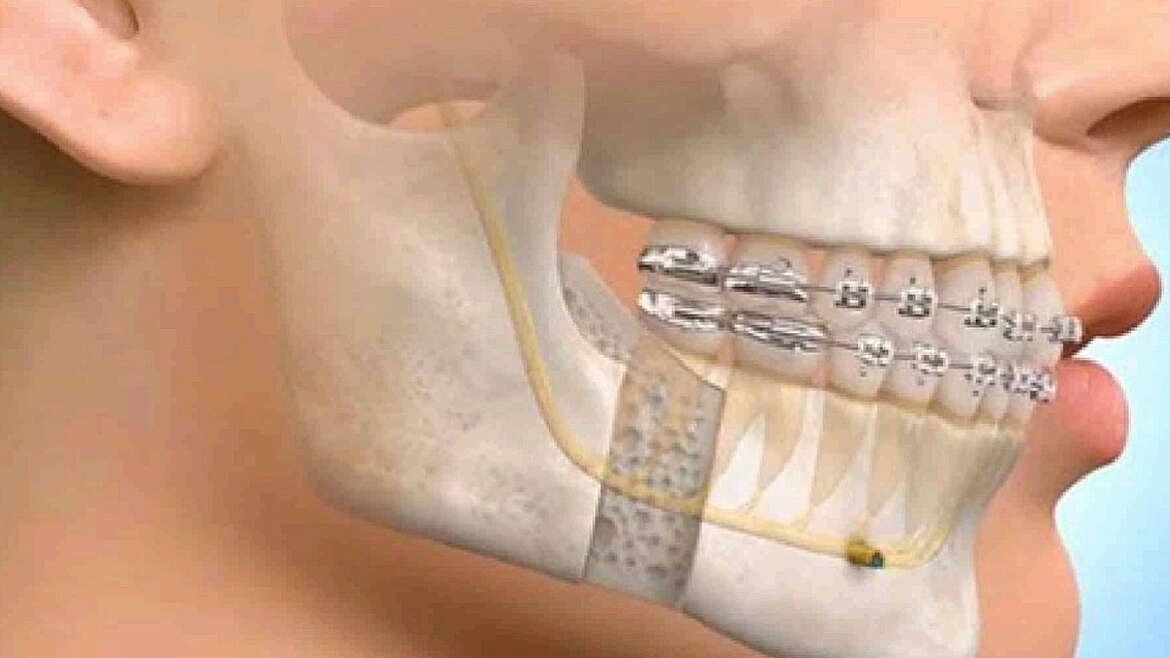Oral and Maxillofacial Surgery is a part of surgery in a mouth and jaw bone in order to solve disorder or various traces of diseases including jaw bone adjustment for esthetic, occlusion or before wearing dentures.
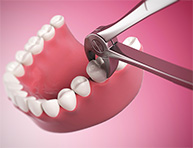
Tooth extraction is the dental treatment that should be the last choice for getting rid of inflammation or tooth infection . Losing any tooth makes the next one move to the space instead and effects biting, chewing and teeth arrangement

Indication of Tooth Extraction
- Inflammation or tooth infection because of a cavity, tooth split or accident.
- Bones Infected that cause from severe periodontal disease.
- Disorganized crowding tooth is not use for biting or chewing that makes some food stick and difficult to clean.
- Before dental braces treatment in order to prepare areas for teeth arrangement
- Before putting on dentures in case teeth cannot be fixed.
rocedure of Tooth Extraction
- Oral examination and intraoral x-ray will be done in order to examine the details of that tooth before pulling it out.
- Pull that tooth out after being numbed
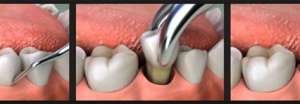
- In case several teeth are pulled out, a dentist may also stitch . The silk used may be stich off within 5 – 10 days ( for non-resorbable suture )
- Follow a dentist’s recommendation.
Note : Informing the details of medical history, allergy history and medicines taken regularly before treatment including following a dentist’s recommendation strictly after pulling a tooth out , will help a patient avoid undesirable complications as follow
- Some regular health problem or taking some kinds of medicines such as aspirin , anti platelet will effect blood coagulation , then may cause bleeding more than usual.
- Some regular health problem ; e.g. , cancer, blood disease, heart disease, high blood pressure , myocardial infarction , diabetes or having several kinds of regular health problems , if so, a patient should consult his regular doctor in order to get ready for having his tooth pulled out.
- Gauze biting after pulling a tooth out, avoiding talking to other , spitting or rinsing a mouth as the dentist ‘s instructions will prevent over bleeding or infection (Dry Socket) after a tooth pulled out.
Tooth Movement Prevention to a Space after Tooth Extraction
If a tooth is pulled out, the beside teeth or biting teeth will move to the space and make bad effects as follow :
- There is a space between teeth at tooth molar position and makes food scraps collect there.
- There is a space between teeth at front tooth and effects to esthetic.
- Side teeth will collapse and occur traumatic occlusion.

- Opposite teeth will move to the space and longer than other teeth that food scraps is easier stuck there
- If a patient needs to wear dentures, collapsed teeth will decrease the efficiency of dentures.
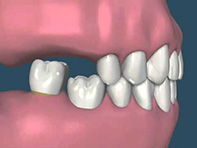
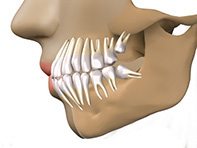
Surgical removal of wisdom tooth is for preventing or to curing wisdom tooth complication. There are several indications needed for an operation as follow:
- Inflammatory reaction or infection from wisdom tooth.
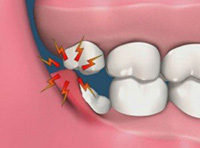
- Partial eruption tooth is hard to clean, but easier to collect food scraps.
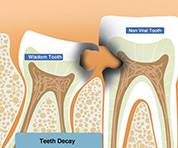
- Impacted tooth is a barrier for new teeth coming up.
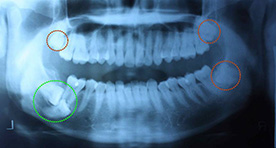
- Impacted tooth with eruptive pressure may disorganize front teeth that can cause teeth crowding.

- Before wearing braces to prevent the pressure of an impacted tooth, it maybe effect to other teeth arrangement.
- Wearing dentures above bones position that has an impacted tooth can cause pain and inflammation.
- To preventing tumor and cyst that cause from impaction tooth.
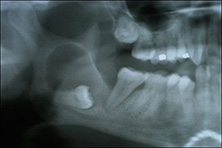
- Any patient who is going to have radiotherapy, he should have to surgery removal of wisdom tooth.
Steps of Impacted Tooth Operation
- A dentist checks a patient’s teeth, then asks him to take x-rays in order to see the details of that tooth first.
- Operation after being numbed.
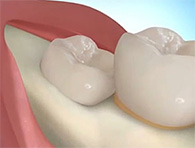
- If an impacted tooth is under a bone or inclined position, a dentist will trim that bone and cut an impacted tooth into some parts in order to be able to take them out of the tooth socket.


- Stitches with dissolved thread after the operation need to be cut within 5-10 days.

- Follow a dentist’s recommendation strictly after operation.
Informing the details of medical history , allergy history and medicines taken regularly; including following a dentist’s recommendation strictly after operation will help a patient avoid undesirable complications as follow :
- Taking some medicines as aspirin , thrombolytic drugs will effect to blood clot and makes bleeding stop slower than usual.
- Some regular health problems; e.g. cancer, blood disease, heart disease, high blood pressure, myocardial infarction , diabetes or a patient with several kinds of regular health problems, he should consult his regular doctor in order to get ready for operation.
- Gauze biting after operation, avoiding talking to other, spitting or rinsing a mouth as the dentist ‘s instruction will prevent over bleeding or infection (Dry Socket) after operation.
- Cold compress around cheeks regularly throughout the first- three hours will recover swell after operation.
Dental implant is a dental technology which replaces natural lost teeth by implanting materials resembling dental roots into jaws, to enable artificial teeth in the mouth cavity, both of the removable type and the fixed type to hold securely. Another benefit is to help in distribution of chewing force on the jawbones, similar to the natural dental roots which protect jawbones against disintegration caused by the losses of teeth.
Dental implant consists of three main steps:
- The artificial root: it is a material made from titanium, replacing a dental root. It is implanted in the jawbone and the bone will create membrane to fasten the artificial root securely, without causing inflammation to the membrane or causing any side effect on the adjunction bone,
- The abutment: it is a material fixed in each implant to be used as a column to support an artificial crown; there are many types of abutments, depending on the nature of the implants,
- The replacement tooth: It is the imitation part of the natural tooth, which can be a crown, a tooth bridge, or a removable denture.
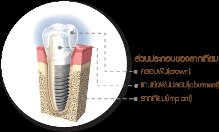
Types of dental implant:
The dental implant is a technology which can be applied to dentistry in three forms as follows:
- A dental implant for a tightly fixed artificial tooth: such as a crown, a bridge, requiring a period of 3-6 months,
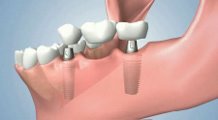
- A dental implant for a removable denture: such as acrylic teeth, metal structured artificial teeth, requiring a period of 3-6 months,
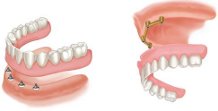
- A dental implant for immediate use: appropriate for a single implant, in a position which does not receive chewing force, requiring a period of only 1 day – 3 weeks.
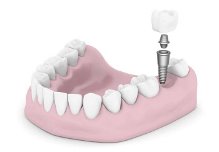
Dental implant procedure:
- The dentist examines the history of chronic diseases and smoking habit, since certain diseases such as diabetes, certain bone diseases, facial x-ray treatment, or smoking may affect the fixing of an implant,
- The dentist examines the mouth cavity health and takes x-ray photos to evaluate health care of the patient’s mouth cavity, and to examine the thickness of the bone supporting the dental implant,
- The operation of the dental implant into the jawbone, under local Anaesthesia, requiring an operating time of approximately 1-2 hours; then, depending on the quality of the jawbone, a period of approximately 3-6 months will be required for a membrane to be formed to hold the dental implant to the jawbone,
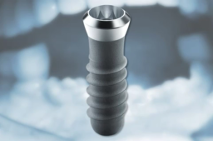
- After the implant has been fixed securely, the dentist will connect the abutment to the implant, and waiting for the gum around the abutment to adjust to the membrane for about 1-2 weeks,
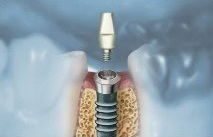
- The dentist prepares a mouth impression for preparation of dentures; this will require a period of 1-3 weeks (depending on the types of the dentures),
- The dentist fixes or puts the denture or crown on the abutment, and provides advice on their care
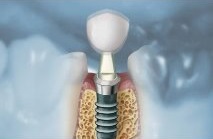
Observance and care after a dental implant:
- During the first week after the operation, soft food should be served and smoking avoided,
- There may be pain and swelling at the operated area during the first week, which you can avoid the said symptoms by:
- Cold compress during the first 48 hours after the operation,
- Warm compress 48 hours after the operation,
- Mouth rinse with salt water after each tooth brushing,
- Taking medicine as advised by the dentist.
- Avoiding chewing food at the position of the dental implant during the first 3 months, so as to prevent impact which might affect the formation of membrane at the implant,
- Brushing your teeth clean after every meal, concentrating on the position of the implant with soft brush and using dental floss normally as natural teeth, once a day,
- Avoiding consumption of hard and tough food,
- Having a dental check-up by a dentist every 6 months.
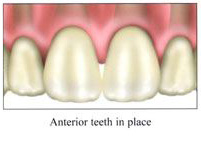
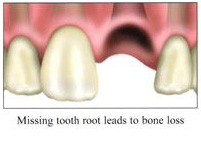
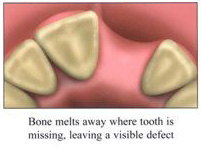
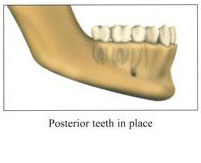
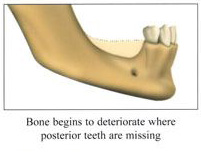
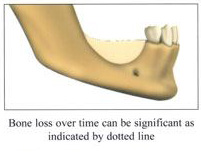
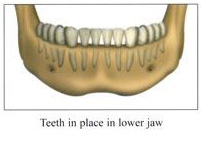

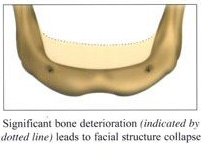
Bone graft is dental procedure to support chewing efficiency; including a patient’s personality in case he has lost bones to support his teeth. The main purpose is to compensate resorb jaw bone range or lose figure from pulling a tooth out for a long time without wearing false root instead. Bone graft will be considered before dental implant or wearing other kind of dentures.
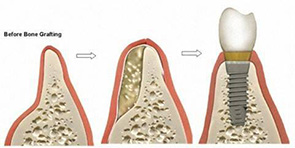
Materials for Bone Graft
- Autogenous Bone Graft is using a patient’s bone such as lower jaw bone, hip bone . A dentist will choose this method in case a patient needs to compensate his bone for wide area. And other kinds of materials are also necessary to combine as a patient’s bone is more destroyed than other materials.
- Allogenic Bone Graft is using a human being’s bone that is frozen dried. A dentist selects this material for bone graft because it is easily used , efficient and the rate of bone resorb is quite low.
- Xenogenic Bone Graft is using a cow’s bone that is frozen dried. This is also a popular alternative because the efficiency and the rate of bone resorb is quite similar as Allogenic Bone Graft
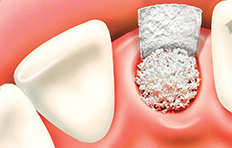
- Alloplastic Bone Graft is the synthetic bone from Hydroxyapatite , but it is not popular because of lower efficiency and the rate of bone resorb is higher than Allogenic และ Xenogenic Bone Graft
Procedure of Bone Graft
- Oral examination and panoramic x-rays in order to evaluate the thickness and the width of bones.
- Operation after being numbed. ( In case the hip bone is needed, general anesthesia is used for this operation. )
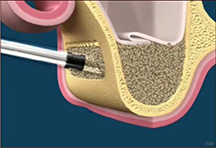
- Stitches after operation will be cut within 7 – 14 days in case dissolved thread is used.
- Follow a dentist’s suggestions on taking care of yourself after operation.
Note Informing the details of medical history , allergy history and medicines taken regularly; including following a dentist’s recommendation strictly after operation will help a patient avoid undesirable complications as follow :
- Taking some medicines as aspirin , thrombolytic drugs will effect to blood clot and makes Bleeding stop slower than usual.
- Some regular health problems ; e.g. cancer, blood disease, heart disease, high blood pressure , myocardial infarction , diabetes or a patient with several kinds of regular health problems , he should consult his regular doctor in order to get ready for operation.
- Gauze biting after operation, avoiding talking to other , spitting or rinsing a mouth as the dentist ‘s instruction will prevent over bleeding or infection after operation.
- Cold compress around cheeks regularly throughout the first- three hours will recover swell after operation.
The objectives of preprosthetic surgery is to support a patient to use dentures for chewing or biting more efficiently; together with solving the problem of unclear speaking caused by tissue blocking the movement of tongue. Here are how to solve problems concerned with the beauty of gum levels.
- Alveoloplasty is trimming embossed, long or sharp alveolar ridge bone in order to have proper shape to serve dentures. Moreover it will help dentures be able to chew extremely and distribute the biting weight on residual ridge better , and prevent pressing pains at unsuitable bone from chewing or biting.
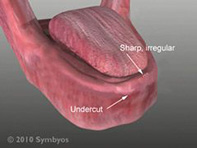
- Torectomy /Reduction of Exostosis that has a bigger size than usual. The tissues covering these bones cause wound because they are thinner than usual.


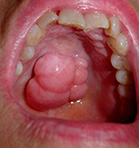
- Frenectomy is frenum adjustment not to block the movement of lips, cheeks or tongue that may effect towards speaking, the recession of the gum , the space of front teeth and the handicap for wearing dentures.
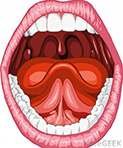
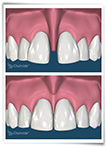
- Vestibuloplasty is the operation for making vestibule deeper in order to make higher ridge suitable for serving dentures better.
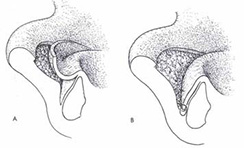
- Gingivectomy is the operation for changing the level of gum higher. The reasons are maybe for beauty, having long teeth, or trimming over gum covered a cavity that will be more convenient for a dentist to get rid of a cavity before filling.

- Crown Lengthening is gum operation and bones trimming in order to lengthen teeth . The objectives are for beauty and lengthening teeth suitable for crown; including shortening the bones and gum that has a spread cavity underneath. This will help a dentist get rid of a cavity before restoration.
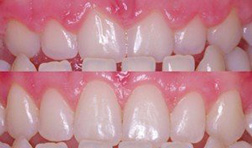
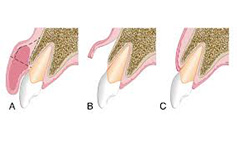
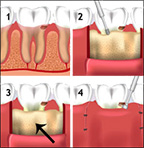
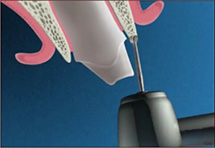
Orthodontics and jaw surgery will be an option when irregular occlusion occurs together with the irregularities of jawbones such as:
- Buck-teeth
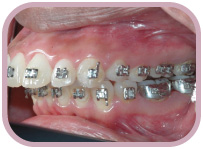
- Short chin
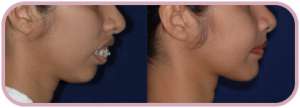
- Long chin


- Hypertrophy of gum
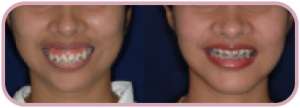
- If tissues in your mouth seem unusual, not only small blisters, tumor, cyst but also oral psoriasis buccalis , you should see the oral surgical specialist earlier for diagnosing. Some diseases cannot be diagnosed by eyes, a specialist may consider to send that biopsy to be done for more precision.
- There are several kinds of cyst and tumor appeared within a mouth, both cancer and not cancer. If a dentist finds it earlier and diagnoses precisely, it will not be difficult to cure. Some diseases can be operated by using local anesthesia ,then a patient has to take care of wound as general oral operation. On the contrary, some diseases may be operated by using general anesthesia or combining with another treatment.
- Therefore do not hesitate to see a dentist if there is something unusual with tissues in your mouth. Moreover seeing a dentist every 6 months for checking up will be better for a dentist to find this abnormal thing and be able to diagnose basically.

